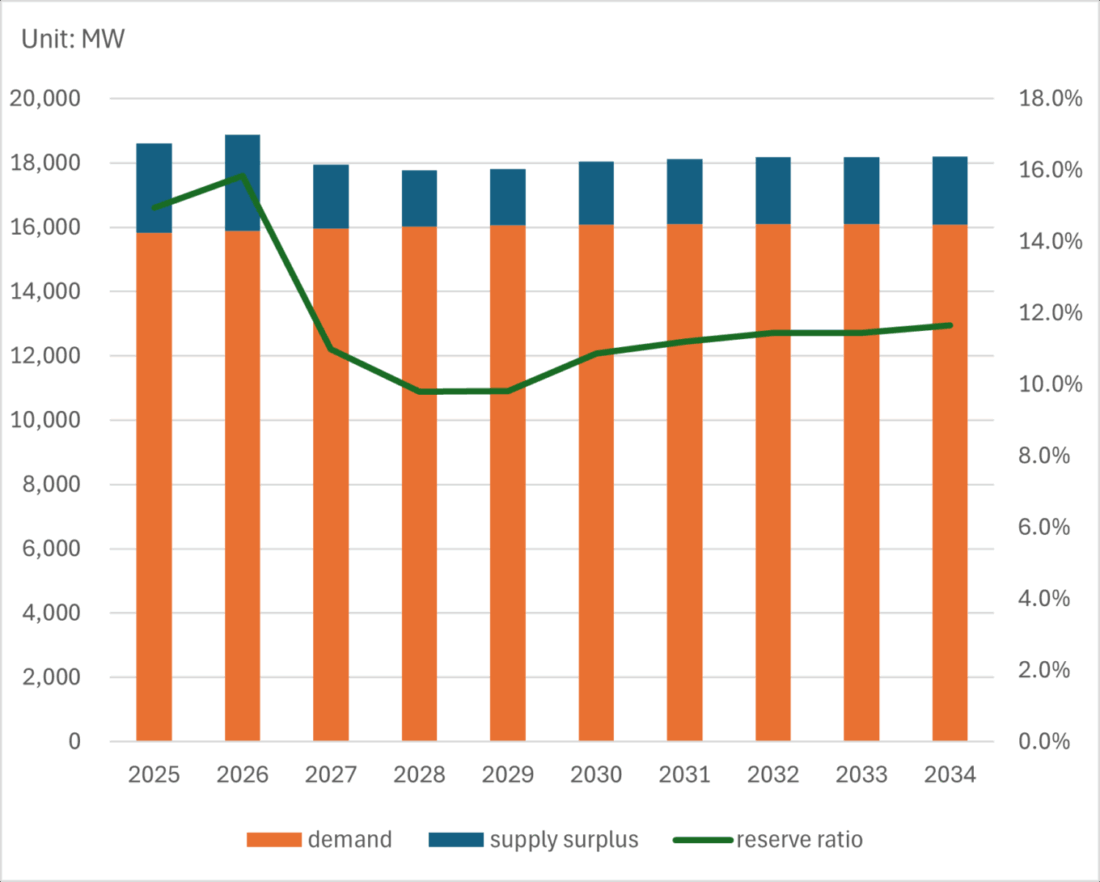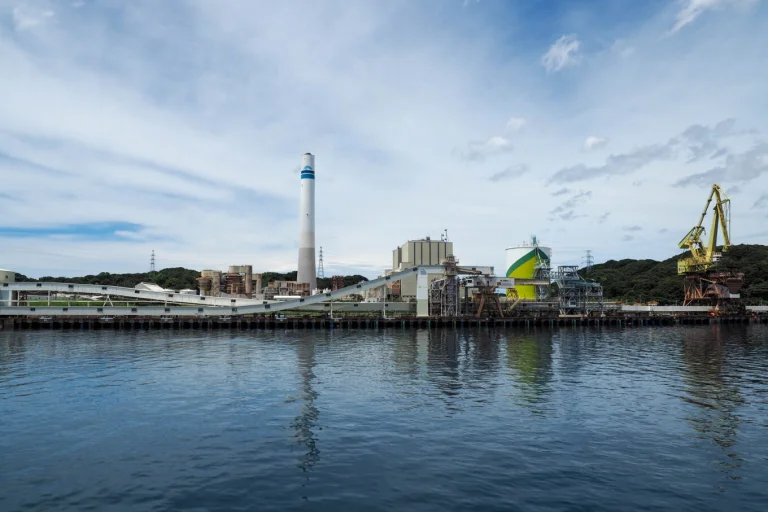On April 1, 2025, Electric Power Development Co., Ltd. (J-Power) announced the planned decommissioning of Unit 1 on May 1 and long-term suspension (“mothballing”) of Unit 2 of the Matsushima Thermal Power Station, in preparation for the GENESIS Matsushima Plan. Status for both units was confirmed on HJKS, a database provided by the Japan Electric Power Exchange.
This is in line with J-Power’s announcement in October 2023 that the GENESIS Matsushima project would be postponed for two years and that the two existing units at the Matsushima Thermal Power Station would be decommissioned by the end of FY2024. J-Power seems to be steadily moving the GENESIS Matsushima Plan forward as it planned, while questions about the necessity of GENESIS Matsushima remain.
In this article, JBC reviews the GENESIS Matsushima Plan and reflects on the current conditions surrounding it, such as Kyushu’s electricity supply and demand, its utilization of thermal power, and the current state of “decarbonization” technology.
Overview of the GENESIS Matsushima Plan
GENESIS Matsushima is a plan to add a gasification unit, gas turbine, and exhaust heat recovery boiler to the existing Unit 2 of Matsushima Thermal Power Station. The plan aims to generate approximately 110 MW of electricity through a gas turbine using gasified coal, and supplying approximately 70 MW worth of steam to the Unit 2 boiler using an exhaust heat recovery boiler. Through these measures, J-Power is aiming to reduce output from coal power generation and lower GHG emissions while maintaining an overall output of approximately 500MW, equivalent to the current Unit 2. In the future, J-Power is also planning to conduct ammonia/biomass co-firing, carbon capture and storage (CCS), hydrogen production from coal, and hydrogen power generation. However, introducing partial gasification will not significantly reduce CO2 emissions as long as coal is being used as fuel.
Circumstances surrounding the GENESIS Matsushima Plan
Is the GENESIS Matsushima necessary for electricity supply in the Kyushu region?
The media has reported that in the Kyushu region, where the GENESIS Matsushima Plan is underway, electricity demand will increase due to the establishment of new semiconductor facilities and data centers. However, according to the electricity supply and demand projections in the Aggregation of Electricity Supply Plans for FY2025 by the Organization for Cross-regional Coordination of Transmission Operators (OCCTO), electricity demand will remain nearly the same at 16 GW, with no major increase in demand expected. It has been mentioned by some media that OCCTO’s electricity supply and demand assumptions are conservative, and that there is a possibility that electricity demand in Kyushu may see a more substantial increase. On the other hand, it has been reported to government committees that business operators planning to construct semiconductor factories and data centers have submitted plans to power companies requesting power supply in excess of what is needed to maintain the power grid, so it is also possible that electricity demand will not increase as much as expected.
The estimated reserve ratio listed in the Aggregation is expected to be around 10% in FY2028, the year GENESIS Matsushima is scheduled to begin operating, and will remain between 10-12% thereafter. (This reserve ratio does not take into account the transfer of supply capacity between areas, so if historical trends are followed in the future, the reserve ratio may improve by a few percent). Considering these factors, the supply and demand of electricity in Kyushu from GENESIS Matsushima is not seen as essential. The reserve ratio has been secured, and so it is not wise to make significant investments to prolong the life of an aged coal-fired power plant with the hope that “electricity demand may increase.”
Estimated electricity supply and demand and reserve ratio in Kyushu (August)

Facility utilization ratio of thermal power plants expected to stagnate
OCCTO’s facility utilization rates (capacity factor) for each power source indicate that the utilization rates of coal-fired power plants are projected to gradually decrease from approximately 57% to 53%, and LNG-fired power plants from 42% to 35%. These rates are based on the national total, so the utilization rates of thermal power generation in Kyushu may in fact be lower due to the high ratio of renewable energy in the region.
Because renewable energy accounts for a high ratio of Kyushu’s electricity, it is expected that thermal power will be used mainly as a regulating power source, and GENESIS Matsushima is expected to operate similarly to an LNG-fired power plant with more flexible output control. In that case, it would be difficult for GENESIS Matsushima to achieve a facility utilization rate higher than 40%. It is difficult to see the significance of constructing a new coal-fired power facility now with such a low utilization rate.
Because renewable energy accounts for a high ratio of Kyushu’s electricity, it is expected that thermal power will be used mainly as a regulating power source, and GENESIS Matsushima is expected to operate similarly to an LNG-fired power plant with more flexible output control. In that case, it would be difficult for GENESIS Matsushima to achieve a facility utilization rate higher than 40%. It is difficult to see the significance of constructing a new coal-fired power facility now with such a low utilization rate.

So-called “decarbonized thermal technologies” are already outdated
Even according to J-Power’s own estimates, the GENESIS Matsushima Plan will reduce greenhouse gas emissions by only 10%, which is nearly the same as current coal-fired power generation technology (ultra-supercritical, or USC) in terms of power generation efficiency. As for the future plans for ammonia/biomass co-firing, both the timing and scale remain unclear. Regarding the core technology of GENESIS (coal gasification), it has been confirmed that 90% of CO2 in the emitted gas can be recovered by using a relatively small amount of the combustible gas produced (approximately 20%), at the demonstration facility (Osaki CoolGen). However, there is no prospect of capturing CO2 emitted from the entire power plant, and the transportation method and location of storage sites for the captured CO2 have yet to be determined.
The electricity needed by businesses constructing and operating semiconductor facilities and data centers, which are expected to drive up electricity demand in the future, will need the electricity generated by hydroelectric and renewable energy sources. Both the technical criteria of RE100, a global initiative bringing together businesses committed to using 100% renewable electricity in their operations, and an initial draft of the revised Corporate Net-Zero Standard of the Science Based Targets initiative (SBTi) no longer allow for coal gasification, CCS, or ammonia co-firing. The technology that will be used in the future at GENESIS Matsushima is already obsolete.
The future of the GENESIS Matsushima Plan
The GENESIS Matsushima Plan is already facing a number of challenges, but J-Power continues to enthusiastically move forward with the project. In order to begin construction in 2026 and operation in 2028 as planned, J-Power will need to conduct the next Environmental Impact Assessment (EIA) and public comment period by the end of 2025. The previous public comment period attracted 3,570 comments, and the number of voices requesting cancellation of this plan continue to grow. Will the day come when J-Power makes the wise decision to cancel the plan in light of the current situation of climate change, global trends, and the voices of citizens?
More Information:
【News】New pamphlet “GENESIS Matsushima Project and its Critical Issues”
【Video】 Emergence of a Coal Zombie? The GENESIS Matsushima Project and its issues
Related sites:
ACT Matsushima (Link)

